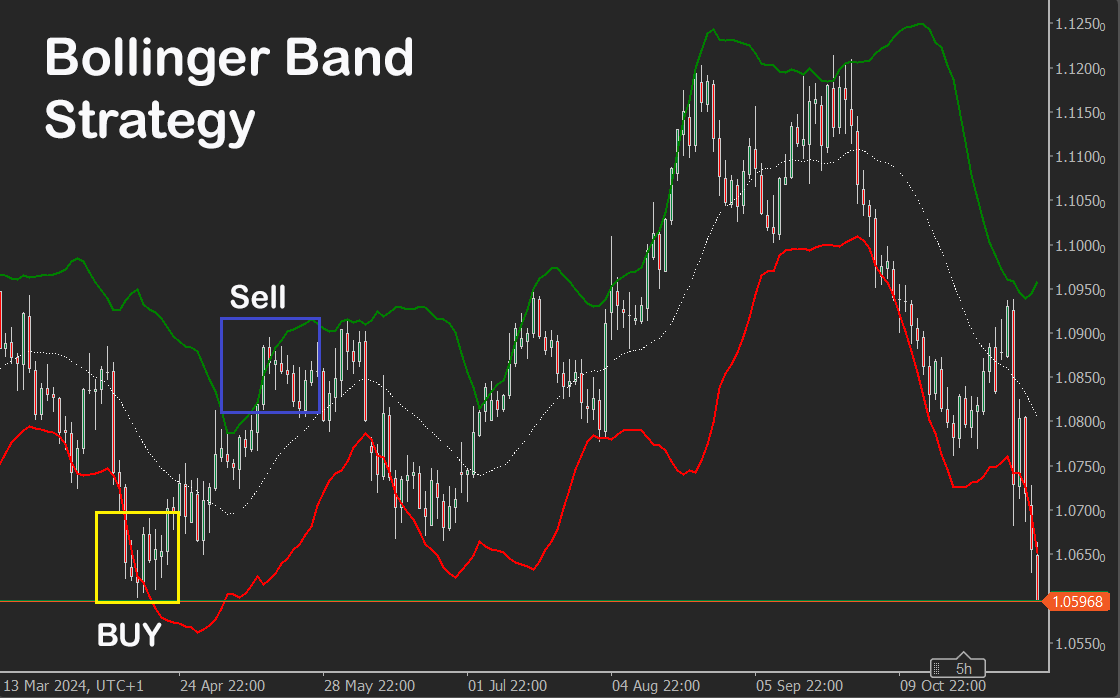Bollinger Band Strategy
A Bollinger Bands strategy typically uses three main components: a middle line (usually a 20-day simple moving average, SMA), an upper band, and a lower band. These bands adjust based on price volatility, expanding during high volatility and contracting during low volatility. Bollinger Bands strategies work well in volatile markets and are commonly used in forex, stock, and crypto trading and the main aim is to capitalize on mean reversion (prices returning to the average) or to catch emerging trends after breakouts.

How to Trade?
Trading with Bollinger Bands involves using the upper, middle, and lower bands to gauge potential entry and exit points based on price volatility. When price touches or moves near the upper band, it may indicate an overbought condition, suggesting a possible shorting opportunity, especially if confirmed by other indicators like the RSI. Conversely, if price touches or drops near the lower band, it may signal an oversold condition and a potential buying opportunity. Breakouts beyond the bands suggest a strong price move, which could indicate the start of a new trend. To increase accuracy, Bollinger Bands are often combined with other indicators to confirm trade signals.
- When prices touch or move above the upper band, it often suggests an overbought condition, signaling a potential reversal or short entry.
- When prices touch or move below the lower band, it indicates an oversold condition, signaling a potential buying opportunity.
Algo Strategy Builder
This strategy was built using the Algorithmic Strategy Building Tool with no coding experience. Full source code included.